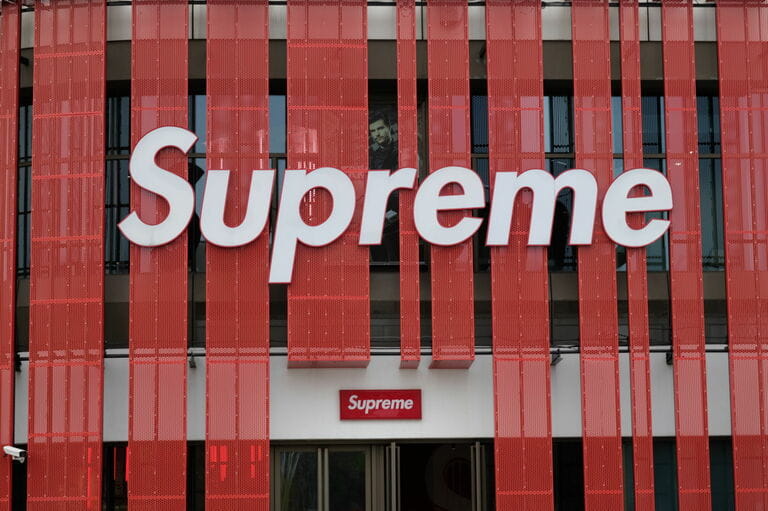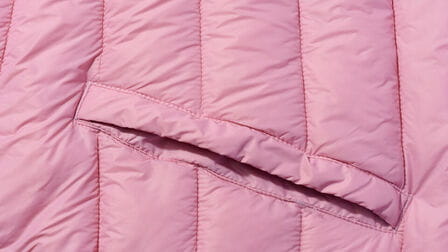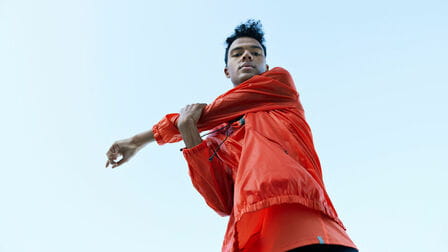Streetwear encompasses a style of casual clothing with roots in urban youth culture. Originally associated with skateboarders, surfers and hip hop artists in the 1980s and 90s, streetwear has since exploded into the mainstream, with some labels ascending to international name recognition. But what is the most famous of these influential streetwear brands?
Supreme: The Undisputed King of Streetwear
Reigning Supreme Since 1994
When any discussion of famous streetwear brands comes up, Supreme reigns supreme. Founded in 1994 by British designer James Jebbia, Supreme has risen over the past three decades to become the undisputed heavyweight champion of the streetwear world.
Jebbia opened the first Supreme store on Lafayette Street in downtown Manhattan, just a short walk from landmarks like CBGB’s and the Palladium that helped shape the aesthetics of 1980s street culture. From these gritty environs, Jebbia sought to bottle the energy and style of New York City skateboarders, hip hop kids and young creatives he observed frequenting the area.
The brand’s breakthrough moment came in 1998 through a collaboration with suburban streetwear giant Mossimo. This early high-profile partnership garnered Supreme mainstream attention and helped cement its signature aesthetic mixing underground credibility with popular appeal.
Building a Cult Following
In the years since its founding, Supreme has amassed a cult-like global following. The scarcity built into its weekly product drops creates feeding frenzies among dedicated fans clamoring to buy the latest T-shirts, hoodies, accessories and skateboard decks.
Outside its tightly-controlled retail channels, these products get feverishly traded on secondary markets where prices soar into the stratosphere. As an example, Supreme’s iconic Box Logo hoodies retail around $150 but often fetch over $1,000 resale.
While avid collectors obsess over boutique items like custom Supreme MetroCards and basketballs, the brand also frequently captures widespread attention through high-profile partnerships. Collaborations with luxury names like Louis Vuitton along with giants like Nike, The North Face and COMME des GARÇONS have made Supreme drops can’t-miss events within streetwear and fashion circles.
Taste-Making with an Irreverent Edge
After close to 30 years, Supreme remains impossible to ignore. It continues setting trends within streetwear and retains its authentic connection to skateboarding thanks to team riders like Mark Gonzales and Tyshawn Jones.
While the brand courts controversy at times through provocative products playing with cultural taboos, Supreme’s ability to drive conversation only seems to grow its profile. Today its iconic red Box Logo has become a badge of cool recognized by young people around the world.
BAPE: A Japanese Streetwear Pioneer
Bringing Street Culture to Japan
A Bathing Ape, or BAPE, stands alongside Supreme as one of the most influential streetwear brands globally. Founded in Tokyo in 1993 by Japanese music producer Nigo, BAPE became the first label to import American hip hop style into the island nation.
As a well-connected DJ and hip hop writer, Nigo recognized the Japanese urban youth’s growing fascination with artists like N.W.A. and Public Enemy. To feed this appetite, he opened the initial BAPE store selling import streetwear items in Tokyo’s Harajuku district, a hotbed for youth culture.
Crafting a Unique Brand Identity

While importing American streetwear to Japan proved a hit, Nigo saw an opportunity to go beyond retailing other labels. Inspired by his childhood obsessing over Planet of the Apes, he created BAPE’s now-iconic mascot, the Ape Head logo.
First introduced in 2002, this cartoon gorilla sporting BAPE’s signature camouflage pattern became a sensation. Today BAPE designs featuring the Ape Head logo remain highly coveted by streetwear enthusiasts across Asia and beyond.
Outside using apparel to drive brand awareness, Nigo also pushed BAPE into new areas like footwear. Partnerships with top athletic shoe companies like Adidas and Reebok created collectible BAPE versions of classic sneakers starting in the early 2000s. These shoes helped cement BAPE’s reputation for creativity and its place as a true streetwear innovator.Dubai, UAE - March 31, 2023 A Bathing Ape store in Dubai Mall
Staying Relevant in Streetwear
Even after selling his stake in BAPE in 2011, Nigo’s impact continues through the label he founded. The current BAPE team keeps designs fresh by collaborating with artists like Kid Cudi along with other streetwear players like Anti Social Social Club.
Celebrating its 30th anniversary in 2023, BAPE retains its signature playful irreverence. The brand may have helped pioneer global streetwear, but it hasn’t lost sight of those roots helping it continue inspiring new generations.
Off-White: Virgil Abloh's Visionary Label
Bridging High Fashion with Street Credibility
Among more recently founded famous streetwear brands, few have made an impact as quickly as Off-White. Launched in 2012 by creative polymath Virgil Abloh, Off-White shook up the industry by melding European luxury with American urban wear.
Unlike Supreme and BAPE which emerged from authentic street culture, Abloh came from a backgrounds in high fashion and fine art. This unique history allowed Off-White to subvert established hierarchies, blending influences as diverse as skateboarding and the runway.
Abloh described his brand’s output as “elevated streetwear” or “the gray area between the black and white.” By crashing high and low culture together, Off-White became a new voice pushing streetwear in provocative directions.Bangkok, Thailand July 26, 2019. Off White high end fashion brand store located in Siam Paragon shopping mall in downtown Bangkok.
Driving Conversation through Controversy

Ever since its founding, Off-White has courted controversy through intentionally disruptive messaging. The brand’s clothing and shows play with challenging themes like capitalism, environmentalism and colonialism to drive societal conversations forward.
Rife with irony and social commentary, Off-White graphic T-shirts and hoodies featured slogans like “For Walking” (on a pair of sneakers) or “Drilling” (on a construction vest). Abloh forced the viewer to question everyday assumptions stitched into the garments they wore.
Beyond apparel, Abloh also created experiences around his clothing meant to challenge assumptions. His early runway shows referenced riots and featured empty bottles implying looting. While provocative, Abloh succeeded sparking thoughts about deeper issues through this conceptual streetwear.
Abloh’s Lasting Influence
The sudden loss of Virgil Abloh after a private battle with cancer rocked the fashion world in 2021. However the massive outpouring of grief at his passing demonstrated his profound impact pushing streetwear in new conceptual directions.
Through Off-White’s avant garde "open source" approach of transparently referencing existing works, Abloh empowered new generations of creators to find their voices. His legacy lives on in those he inspired to keep challenging tired notions not just surrounding streetwear but all aspects of culture.
Stüssy: A California Skateboarding Legend
Shaping the Defining Streetwear Style
No recounting of famous streetwear brands would be complete without Stüssy. This quintessential California label defined the casual SoCal aesthetic that has become core to mainstream streetwear. From graphic T-shirts to trucker hats and hoodies, Stüssy innovated styles still popular decades later.
Founded in 1980 by “surfer bro” Shawn Stussy, the brand emerged from custom boards and apparel he began crafting as a teenager. These creative outlets were ways for Stussy to connect with local skate rats and surf kids who would meet up to talk story and trade goods.
From these grassroots beginnings, Stussy’s DIY aesthetic attracted afollowing well beyond its coastal roots. Today the “Scribble” logo Shawn spray painted atop caps and tees signifies his enduring impact crafting classic streetwear.
Collaborating Through Street Culture
Another driver behind Stüssy’s worldwide fame was its early embrace of collaborations. As the first streetwear hit Japan, Stüssy teamed up with BAPE founder and superfan Nigo on caps and tees merging both brand aesthetics.
This merger demonstrating the universal appeal of SoCal culture laid groundwork for other crossovers between Stüssy and brands like Dr. Martens, Comme Des Garcons and master graffiti artist Futura 2000. Through these partners and others, Stüssy tapped creative communities globally that propelled it to popularity.
Staying Core Yet Commercial
Today from its headquarters in Irvine, Stüssy keeps innovating while remaining true to California counterculture roots. Its designs still resonate by promoting artists like reggae singers Barrington Levy and Buju Banton who embody same rebellious pioneering spirit as the brand.
Collaborations also continue introducing Stüssy to new audiences, like a 2022 collection created with Converse featuring remixed takes on classic sneakers. While core fans obsess over rare vintage tee reissues and Japan exclusives, unisex styles also hit mass retailers like Zumiez that offer access for casual streetwear fans.
This balance allows Stüssy to drive culture while maintaining accessibility - demonstrating why its that authentic creative spirit still thrives more than 40 years later.
Conclusion: Breaking Rules While Building Community
The most iconic streetwear brands exist at the intersection of business success and cultural clout. Supreme, BAPE, Off-White and Stüssy earned notoriety through fearlessly charting their own courses guided by the creative energy within skateboarding, hip hop and other youth movements.
Rather than following fashion industry standards, famous streetwear creators connected directly with their audiences by adopting the same casual clothing their consumers actively lived in. From limited-edition "drops" to provocative slogans to collaborations that bridged subcultures, each brand formed intimate bonds with supporters.
While vastly different, Supreme's cultish appeal, BAPE’s Japanese pop artistry, Off-White’s high concept irreverence and Stüssy’s SoCal cool all gave voice to outsider perspectives. By boldly rewriting streetwear's visual language, these pioneers built welcoming spaces that challenged tired notions of what clothing should represent.
Today fashion continues looking to the streets for inspiration. And thanks to a handful of visionary rulebreakers building creative community, streetwear now sits comfortably in the mainstream while still retaining its radical heart.












